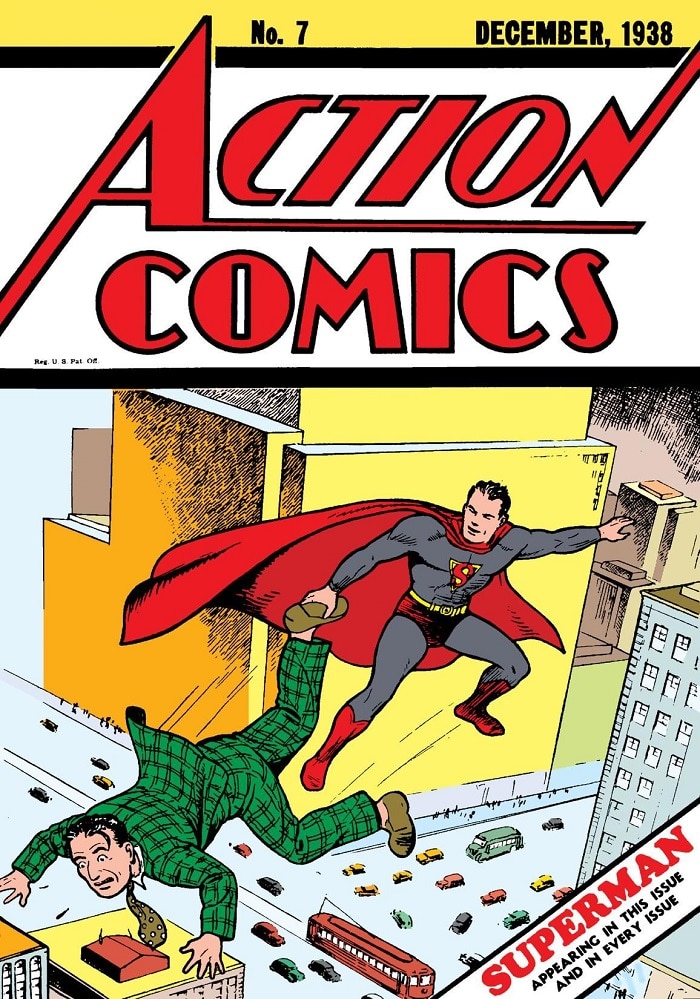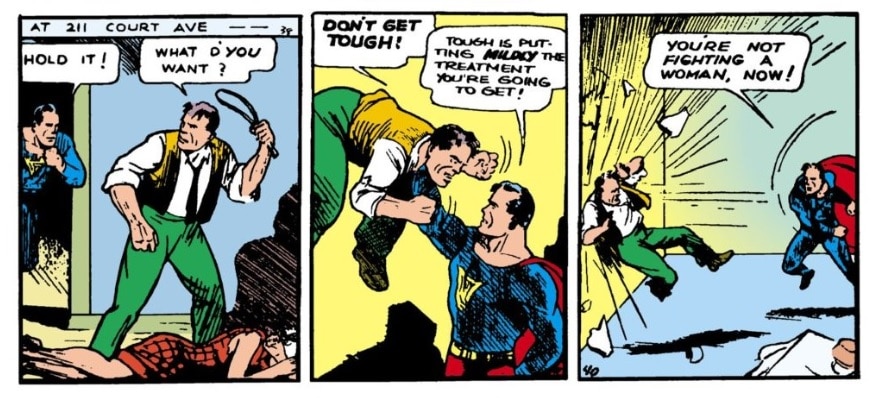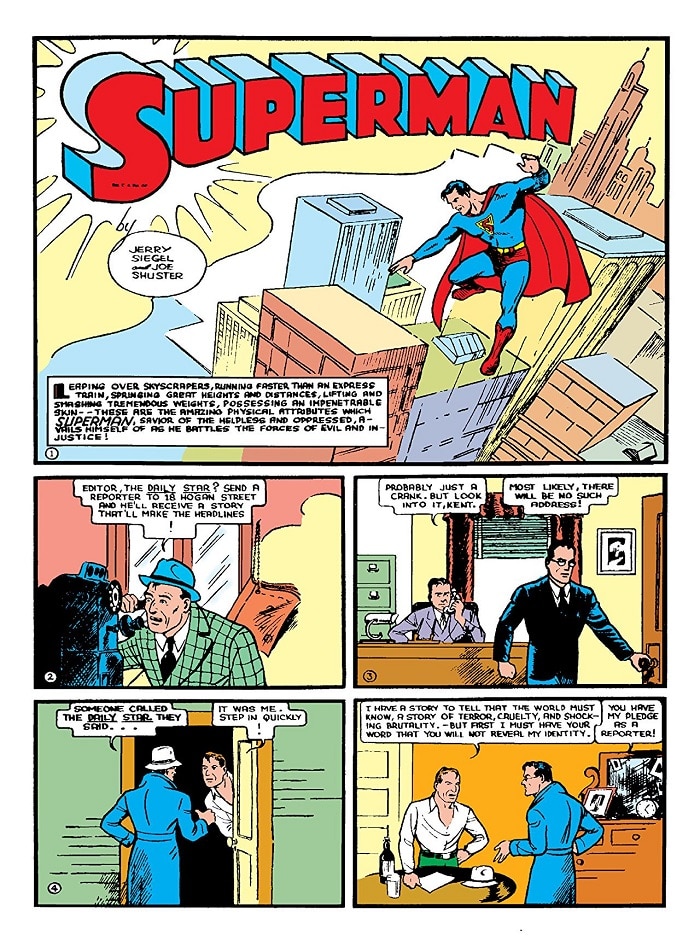Over the past few years, I’ve been very fortunate (pure luck, honestly) to be involved with some great projects for DCComics.com. So, you can imagine how pumped I was when asked to write something about Superman for his 80th Anniversary.
I decided to focus on an era that can sometimes be overlooked within Superman’s extensive history—a section of Superman’s past that I’d never actually read before. Let’s dive into the Golden Age of Superman!
Technically, the Golden Age ran from 1938-1955, but I’m going to focus on the late 1930’s through the ‘40’s. Basically, Superman’s earliest adventures. The sort of thing you would have experienced if you were an eager child grabbing up issues of ACTION COMICS during WWII.

The most enduring thing about the Man of Tomorrow is that despite being an alien from a distant planet and possessing immense power, he’s somehow one of the most human characters in all of pop culture. At his core, this is still true in the early works, but there’s a slightly different vibe to him. While he’s still helping people and doing very Superman-like things, he’s a little more aggressive in these stories. This version of Superman is gruffer and intimidating in his handling of bad guys. He’s different from the compassionate and often deep-thinking Superman we’re accustomed to now. His “no BS” attitude seems to be a direct representation to the era in which these stories were written.
In fact, a huge charm of these early adventures is due to the period they were written in. When you read them, you’re instantly transported back in time. I obviously didn’t live back then and experience firsthand what it was like, but I’ve certainly consumed my fair share of romanticized period-piece movies and documentaries dealing with organized crime and stylized/flamboyant suit-wearing tough guys running various rackets. It’s fun to see these same guys in the Superman comics using words like “dame” and “weak-livered pole-cat.” There’s something undeniably joyful in experiencing that and knowing full well that co-creators Jerry Siegel and Joe Shuster were drawing inspiration from the world around them at the time.

Speaking of those guys, you won’t find Superman battling intergalactic threats or super-powered villains in these earliest stories—quite the opposite, actually. This version of Superman wages war on corruption and evil men who take advantage of those who are poorer or weaker than them. He’s a champion of the downtrodden and the “little guy.” It still works today, but I imagine this theme must have went over huge with readers at that time in our history coming so soon on the heels of the Great Depression.
You also won’t see him flying or using abilities like his heat vision in these stories. Nope. Most of those abilities came later. This is a very basic, stripped-down Superman. He relies on his brute strength, incredible speed, smarts and ability to leap really high and far. Remember, that classic Superman radio opening mentioned his “ability to leap tall buildings in a single bound.” It didn’t say anything about flying. We have the classic Fleischer cartoons to thank for that famous ability.
If you think Superman fighting normal men limits his range to only operating out of Metropolis, you would be wrong. A huge strength of these Golden Age stories is relying heavily on Clark’s profession as a reporter at the time. In an era where that was THE way to have your finger on the pulse of the world, this allows Superman to travel anywhere on the map. Most of these stories start with Clark being given an assignment or lead by his editor and end up with Clark becoming Superman to correct whatever issue he was set out to report on, and these leads take him far and wide. In this way, he was more of an adventurer and on par with a lot of pulp stories and characters that were popular at the time—which Siegel and Shuster were undoubtedly inspired and influenced by.

Of course, I can’t talk about Superman and not mention Lois Lane. After all, it’s her anniversary too. I’ve always loved the Golden Age version of her. Through the years, Lois has always been a strong woman who knows her worth, but there’s something even more charismatic and special about the Golden Age Lois, maybe because she was succeeding at a time and in a business that was widely considered a “man’s world.”
Put simply, if you really want to understand Superman as a character, comic books as an industry, or superheroes as a dominant force and influence in pop culture, you really need to read Superman’s Golden Age stories. They’re simple, entertaining, silly at times, inspiring and always fun, but are the seed that blossomed into much of today’s entertainment. And as comic fans, you’ll enjoy watching the progression of Siegel’s and Shuster’s writing and art, too.
Remember, no matter how old these stories are, they can still awaken the superhero in all of us.
Matt Ross writes about the DC Universe for DCComics.com and covers Arrow for the #DCTV Couch Club.
ACTION COMICS #1000 featuring art and stories by Brian Michael Bendis, John Cassaday, Paul Dini, Geoff Johns, Tom King, Jim Lee, Scott Snyder and more is in stores on April 18, 2018.















